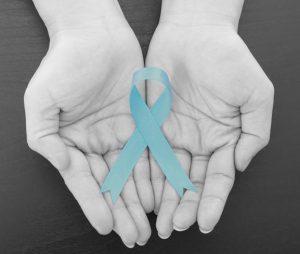 Each year, more than 22,000 women in the U.S. are diagnosed with ovarian cancer, according to the American Cancer Society. But since the symptoms can be nonspecific and there aren’t any standardized tests specific to ovarian cancer detection, the disease can be tough to catch before it spreads. In fact, the American Cancer Society reports that only 15 percent of women are diagnosed early, when treatment is most effective.
Each year, more than 22,000 women in the U.S. are diagnosed with ovarian cancer, according to the American Cancer Society. But since the symptoms can be nonspecific and there aren’t any standardized tests specific to ovarian cancer detection, the disease can be tough to catch before it spreads. In fact, the American Cancer Society reports that only 15 percent of women are diagnosed early, when treatment is most effective.
WHAT’S MY RISK?
On top of being difficult to diagnose, this form of cancer can also be hereditary. Ten percent of ovarian cancers come from inherited genetic mutations in the BRCA1 and BRCA2 genes that are present from birth, according to the CDC.
Although everyone carries BRCA genes, it’s only when they become mutated or defective that cancer cells can begin to grow out of control. Women with an inherited BRCA1 mutation have a 35-70 percent lifetime risk of ovarian cancer, while women with an inherited BRCA2 mutation have an estimated risk between 10 percent and 30 percent by age 70, according to the American Cancer Society.
CAN I DO ANYTHING ABOUT IT?
The good news: Whether or not you have ovarian cancer, it’s important to know and fully understand your BRCA mutation status.
For starters, genetic testing (typically a blood or saliva test) can determine your BRCA mutation status and help you understand your ovarian cancer risk if you have not yet been diagnosed.
Meanwhile, tumor testing (in which a sample of the tumor is tested for genetic mutations) can help guide treatment decisions if you’ve been newly diagnosed.
Here’s a breakdown of what you should discuss with your doctor:
- YOUR FAMILY HISTORY
Let your healthcare provider know about any first- or second-degree relatives who’ve had ovarian, breast, or colorectal cancer. The more details you can provide—like the relative’s age at diagnosis, the outcome, and the results of any past genetic testing—the better.
Don’t forget to consider family members on both sides. “Your dad’s family matters as much as your mom’s,” says Elizabeth Swisher, MD, professor in gynecologic oncology, adjunct professor in medical genetics and director of the Breast and Ovarian Cancer Prevention Program at the Seattle Cancer Care Alliance. - YOUR RISK
Along with having a family history of ovarian cancer, the American Cancer Society says that other risk factors include:
• Age: Half of ovarian cancer cases develop in women 63 and older.
• Having a BMI of 30 or greater.
• Never carrying a full-term pregnancy or having children after 35.
• Using estrogen-based hormone therapy after menopause, particularly if estrogen is taken alone for 5-10 years without progesterone.
• If you previously had breast cancer. - UNUSUAL SYMPTOMS THAT PERSIST
Symptoms like bloating, pelvic or abdominal pain, indigestion, or difficulty eating may mean you have a stomach bug—but they can also be signs of ovarian cancer.
If they seem to persist, take action. “If you have a new onset of symptoms that are not your baseline and they last for two weeks, you should discuss them with your doctor and consider having a pelvic ultrasound,” Swisher says. - GENETIC TESTING
Genetic testing (a blood or saliva test to determine if you have inherited a BRCA mutation) can help you determine next steps to reduce your ovarian cancer risk, depending on the results.
If you’ve already been diagnosed with ovarian cancer, your BRCA status can help inform treatment options or clinical trial eligibility. Basically, your doctor or a genetic counselor will collect a DNA sample from your blood or saliva and have the results back within a few weeks.
For more information on BRCA mutations and testing, visit beBRCAware.com. - TUMOR TESTING
Ovarian cancer research has helped move treatments forward. And if you’ve been recently diagnosed with ovarian cancer, tumor testing (which involves testing a sample of the tumor to see if there are mutations in the tumor) can help inform your treatment plan and help determine whether targeted therapy is right for you. - LIFESTYLE
In general, an unhealthy lifestyle including poor eating habits and lack of exercise may increase your risk of developing cancer, according to the American Cancer Society. In fact, studies show active women may have a lower risk of ovarian cancer compared to their sedentary counterparts. - YOUR SCREENING OPTIONS
Regular screenings can play a valuable role in catching ovarian cancer early, which can drastically increase the odds for survival.
“My practice is to recommend screening for BRCA1 carriers starting at age 30 and for BRCA2 carriers at 35,” Swisher says. Talk to your doctor about the pros and cons.
(Reprinted from Woman’s Day)


